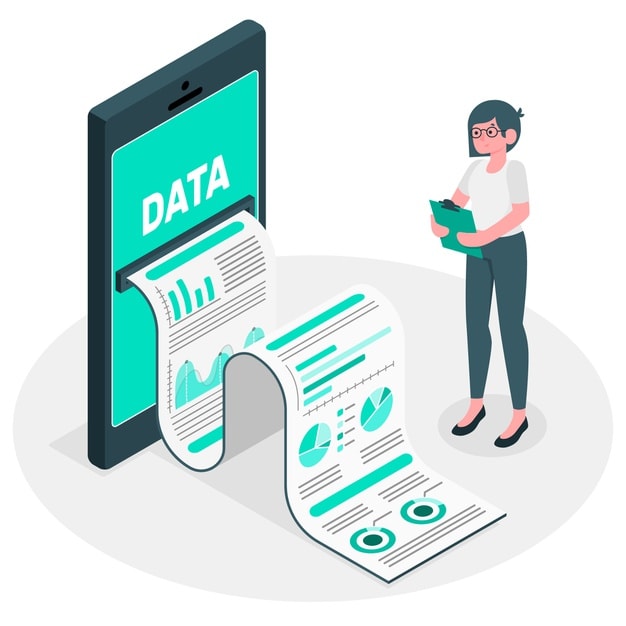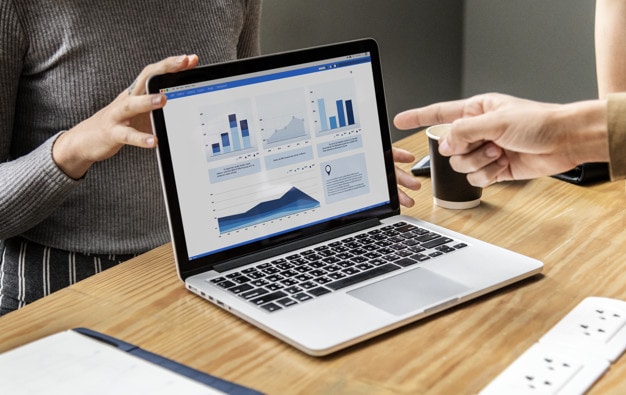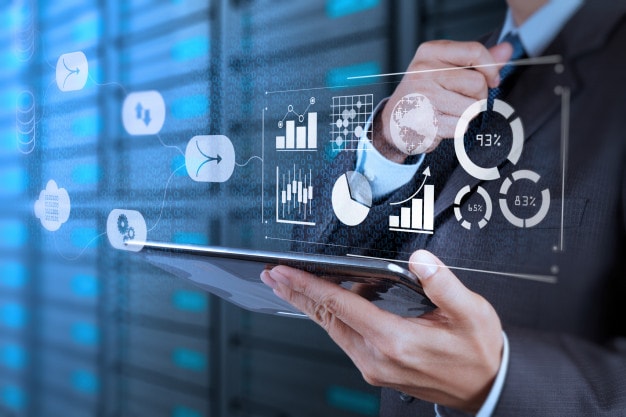Process of analyzing, evaluating, cleansing, modeling, and transforming data by utilizing different statistical or analytical tools for finding out some useful information to make helpful conclusions and empower decision-making processes is understood as data analysis.
The primary reason behind data analysis is extracting vital info, so you have the right data for solving your issues and drawing the most accurate conclusions.
This post will take you deep into the world of data analysis and help you understand how to use data for making more informed decisions to optimize the chances of getting favorable outcomes. So, let us get started straight away-
Table of Contents
Introduction
Data is a form of collected information that is crucial. There are various technologies and companies which are driven with the help of data.
It means that these companies require data for their functioning.
Data is the raw material they need. It is processed using several technologies and methods.
It leads to the generation of the final output, which can be used for some other process or delivered to the client in the form of the final product. Data is often used for data analysis.
Data analysis can be termed as the process wherein a person or a system analyses the information which comes in.
In data-driven businesses, everything depends on the correctness of this data analysis. That is why it is of utmost importance.
The essential data is collected using any means of information. This data is then analyzed using various tools and resources.
Data analysis is a qualitative method of researching the data which has been gathered.
The technical definition of data analysis says that it is the systematic application of logical and statistical techniques to condense, illustrate, describe, evaluate, and recap data. The field of data analysis is critical and is an integral part of many processes.
Means of Data Collection used in Data Analysis
Data can be collected in various ways and means. The most crucial part of data gathering is the authenticity and the correctness required.
Data can sometimes get ambiguous or misleading. Such data should be eliminated, and those sources should be avoided. Here is a list of some of the data sources.
1. Observations
Observing people is the key to a lot of information and data. The basic ways of observation are watching people, hearing them talk, and deciphering the meanings of their actions and reactions.
It is a great way to gather maximum information, but the means of doing this should be ethical. There should be no breach of privacy and security while doing so.
2. Surveys
Surveys include sets of questions that are used to understand the data. These questions need to be answered by the concerned people or the system under consideration.
The answers obtained work as a dataset. It is the dataset that can be further used for detailed analysis.
3. Interviews
This type of data gathering is generally used to extract data from living sources—the one who needs the data interviews, either one person or a group of people. The answers sought in this interview pose as the required data. One can use this data for further processing.
Let us now have a look upon different steps that will help you in your data analysis process-
Steps of Data Analysis
Data analysis can be achieved using the steps defined and described in several studies and research.
1. Define your objectives
The motive behind the data analysis should be clearly defined. To get the best results out of some data analysis, the objectives should be crystal clear.
To make the intentions very clear, you can ask various questions. The answers to these questions will help define the goals better.
2. Define questions
Once you have your objectives defined clearly, you need to ask the questions to your dataset.
The answers that you seek should be achieved through the data analysis you want to carry out.
The dataset needs to answer all of these questions, and only those explained can be solved by further data analysis.
3. Data collection
It is a crucial step. You need to collect all the essential information required for the data analysis.
The data collected should be able to answer all the defined questions. If they answer all these questions, the collection of data can be used for further analysis.
4. Data scrubbing
The data which is collected in the steps given above is mostly in the raw form. Some details are not required while there is some unnecessary data.
These unnecessary parts can be eliminated through a process called data scrubbing. In data scrubbing, the available data is converted into a form compatible with the tools of data analysis.
5. Analyze the available data
In this step, the available data is analyzed. Various tools are used for analyzing this data.
Some devices are oriented with the latest technologies, while some methods are elementary to execute.
The result of this step is a block of well-analyzed data which can be used for prediction and conclusion purposes.
6. Result interpretation
The results of the data analysis need to be studied well. It enables a straightforward interpretation of the data.
The results of data analysis can be used for drawing conclusions and making predictions. The current dataset and its analysis are used for making future predictions.
It helps you stay ready for the developments and new changes in the future.
Let us now have a look upon 10 of the most effective techniques of data analysis-
Key Techniques involved in Data Analysis
Data analysis can be done using various techniques. Most of them are very useful and straightforward to implement.
1. Establish your questions and clear your objectives:
If you have your objectives clear and well-defined, you need to pose the right questions. The answers to these questions form an excellent technique for analyzing your data available. This step is the foundation of many advanced data analysis techniques.
2. Set the KPIs
KPI stands for ‘Key Performance Indicators.’ These are the critical areas on which you need to focus on enhancing your performance. KPIs are essential in both qualitative and quantitative analysis of the data. It helps you measure and track the progress of your data.
3. Collaborate your needs
You need to collaborate with your needs with your data analysis techniques. For this, you should have a meeting with all the stakeholders and plan a data analysis process. It gives a better picture of the strategic goals and functional requirements.
4. Omit unnecessary data
The useless data needs to be omitted to focus on the primary information. You can use the KPIs (Key Performance Indicators) to highlight the essential and necessary data. When the omitted data is deleted, the remaining data is refined and more accurate.
5. Design a roadmap for data management:
A roadmap is a plan for executing an individual activity. Even in data management, there are steps for storing, managing and handling data. The governance data roadmap helps the analyzer design a data analysis technique that is more sustainable and effective.
6. Integrating technology
Many emerging technologies help people in analyzing data in the best possible way. Some of the underlying data analysis techniques include programming languages Python and R. Also, there are simple tools like Microsoft Excel, which help in data analysis. Such technologies can be integrated to form a good data analyzer.
7. Data visualization
Data visualization is the process of extracting the metrics and showing them to the people in the form of graphs, pie charts, and tables. It provides you with an insight into the data and aids the business.
Data visualization can be used to make your company’s employees well-informed and more intelligent concerning the data.
8. Do statistical analysis
Conducting statistical analysis is one of the most useful techniques for data analysis. It works by focusing upon different aspects such as Cluster, Regression, Cohort, Neural Networks, etc. This way, it offers your data analysis proceedings in a logical direction. Let us have a brief look at all these aspects of statistical analysis-
- In Cluster, the grouping of a set of elements is done in a way that similar elements are grouped by forming a cluster.
- In Cohort, you will have a subset of behavioral analytics that is used for taking insights from the given set of data set. In this, each of the elements would be broken into related groups, and hence you will be having a wealth of info about consumers’ preferences.
- The third aspect is regression, and it revolves around a fixed set of statistical processes that work upon making the relationships amongst specific variables for gauging a deeper understanding of contemporary trends.
- The fourth aspect of statistical analysis is a factor, and it is used for describing variability amongst different correlated variables in terms of a potentially lower number of unobserved variables. This is used for uncovering latent variables that independent.
- The next aspect of statistical data analysis is neural networks that revolve around machine learning used for predicting the outcome of a specific variable.
- The sixth aspect of statistical data analysis is data modeling, which is used as the umbrella term for the insights and engineering metrics for value, context, and direction. When it comes to analyzing data, it is one of the most important aspects of statistical analysis.
- The last aspect of statistical analysis is predictive analytics that is quite useful in helping you to spot invaluable trends. Predictive analytics is used for unfolding and developing different initiatives that can enhance your operational procedures, plus also empower you to have the edge over the competition.
Types of Data Analysis
There are some basic types of data analysis, like the ones given below. You can decide which one to take based on your requirements and resources available.
1. Diagnostic analysis
This type of data analysis is used to diagnose a particular situation. The diagnostic analysis is a way of determining how something has happened. The business world needs a proper diagnosis of every case to ensure the profitability of every given situation.
2. Descriptive analysis
Descriptive analysis is the type of analysis that lets you know what has happened in the data. The answer to ‘what’ can be found out through KPIs, sales, revenues, and leads.
This data analysis gives all the necessary information about the dataset.
3. Predictive analysis
The most crucial purpose of data analysis is predicting future events. The graph, pie charts, or any form of data visualization is widely used in predictive analysis.
The results of the previous report are used for predicting the turn of events in the future. If the future can be predicted correctly, you can devise the plans to maximize the profits and mitigate the risks.
4. Prescriptive analysis
Once the descriptive analysis, diagnostic analysis, and predictive analysis are done, you can go for prescriptive analysis. In predictive analysis, you generally predict the events of the future.
In this stage, you can prescribe the necessary steps for mitigating the risks. You can also advise methods for enhancing the quality of the product or the service and increasing the profits.
Let us now have a look upon some of the best tools that you can use for the data analysis purposes-
Best Tools for Data Analysis
- IBM SPSS Modeler
- R-Programming
- Elasticsearch
- Lumify
- Apache SAMOA
- Plotly
- Spark
- Splice Machine
- Talend
- Skytree
- Microsoft HDInsight
- Xplenty
Final Thoughts!
Data analysis is a crucial concept in business management. Many businesses are data-driven. It means that they require a constant supply of correct and authentic data.
This data needs to be analyzed thoroughly to gauge the behavior of data and predict its future scope. There are various stages and steps involved in perfect data analysis.
There are four types of data analysis, and when all of these types are executed with all the steps, you will get good results through data analysis.
How significant do you consider data analysis for contemporary businesses? Share your views with us in the comments below.
Liked this post? Check out the complete series on Management


